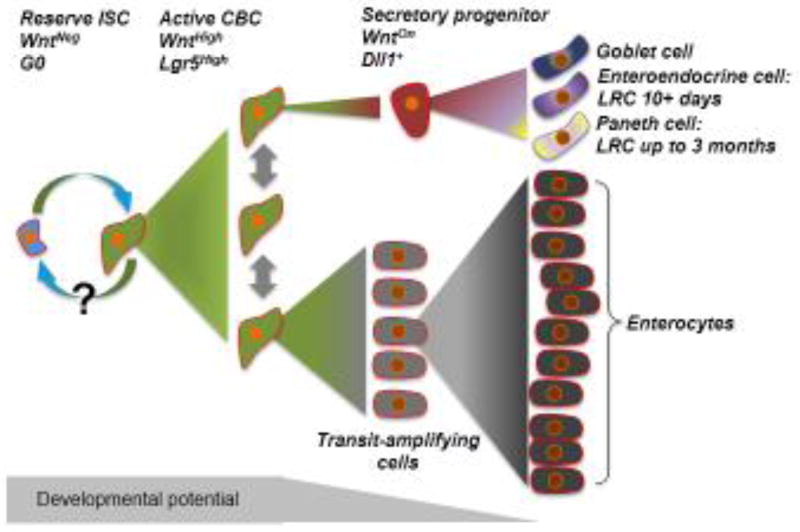Figure 3.
Model of intestinal stem cell compartment organization. In the hierarchical model, a population of rare stem cells that lack canonical Wnt pathway activity and reside in the quiescent G0 state sits atop the hierarchy. During homeostasis, these cells periodically divide to generate CBCs driven by high Wnt pathway activity and marked by Lgr5 expression. Whether CBCs can re-enter the WntNegative reserve ISC state remains an outstanding question. CBCs divide symmetrically and stochastically give rise to transit-amplifying cells which begin to lose developmental potency as they undergo the massive proliferation required to generate large numbers of short-lived enterocytes. Conversely, CBCs can activate Dll1 expression and commit to the secretory lineage. These secretory progenitor cells retain some developmental potency, even after they exit the cell cycle and retain DNA label while they acquire hallmarks of enteroendocrine and Paneth cell lineages. The secretory progenitor cells can also give rise to goblet cells, a fate decision that is presumably coupled to additional cell divisions as no evidence for goblet cell identity is found in the short-term label retaining cell population. Long-term label retaining cells are terminally differentiated Paneth cells that have lost developmental potency.

